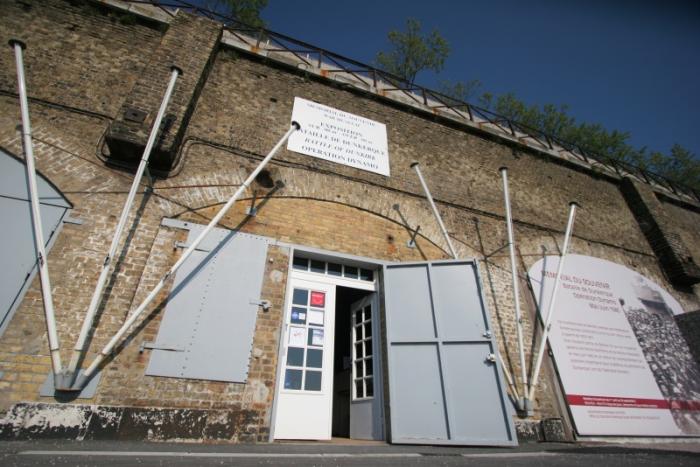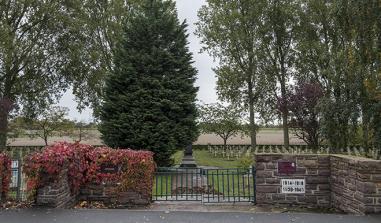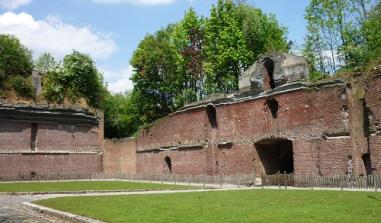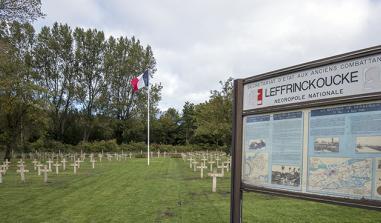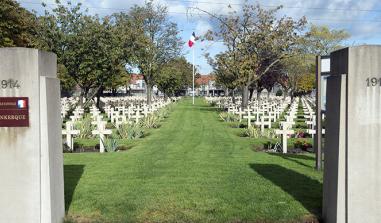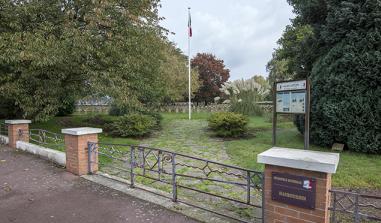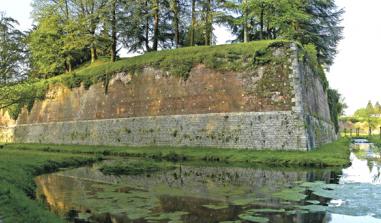Situated at the Belgian border and facing England, the port town of Dunkirk has been a historic strategic position through the centuries. The first fortifications were erected around the city in the 10th century. Over the centuries, the town changed hands several times before Louis XIV bought it back from the English in 1662 and asked Colbert to turn it into a fortified town. Between 1818 and 1848, a series of structures was built to establish a bastioned wall surrounding the town. The system was improved between 1869 and 1879. It was during this series of renovations that the bunkers and curtain walls of Bastion 32 were constructed, in 1874. The law of 8 March 1921 decommissioned Dunkirk’s fortifications and the majority of the ramparts were destroyed in 1930. However, the fortifications looking out to sea were preserved.
From 13 May 1940, while the armoured German divisions pushed through the front line in Sedan, the entire British Expeditionary Force and the finest troops of the French army were threatened with being surrounded. To avoid this trap, the French and British units retreated to Dunkirk. In no time, the town was overwhelmed with hundreds of thousands of soldiers trying to return to England. Surrounded by German forces, 15,000 French soldiers waged a strong defence to enable their French and British comrades to board a ragtag fleet of over 1,400 ships while the Luftwaffe unleashed hell on the northern port town. The rescue operation, dubbed "Dynamo" would be one of the war’s must surprising defensive successes, since when the town fell, some 340,000 soldiers had been successfully evacuated to England. Only 40,000 men were captured by the Germans. During the battle, Bastion 32 was chosen as the headquarters by Admiral Abrial, commander of the naval forces of the North General Fagalde, tasked with leading the defence of Dunkirk. Later, during the German occupation, Bastion 32 was converted into a military hospital.
The museum project
This place steeping in history was kept in good condition for several decades before being destroyed in 1979 to make more room for the port’s shipyards. The only remnants of its illustrious past are the 32-5 curtain walls, renovated in the late 1990s to honour the 60th anniversary of the Battle of Dunkirk and the Dynamo Operation on 1 June 2000. The project consisted of transferring a large proportion of an exhibition on the Battle of Dunkirk and the Operation Dynamo, created in 1969 and inaugurated by Michel Debré, the then minister of defence. Since that time, the exhibition had lain dormant in the cellar of Dunkirk’s Fine Arts Museum.
Named the Mémorial du Souvenir, the "new" Bastion 32 displays an important collection of arms, uniforms, objects and photographs from the period, over 700 m² of exhibition space.
Visitors can also see a number of ordnance survey maps and models which help explain how the operations unfurled. The collections include some interesting relics, like a turret from a Hotchkiss tank, a 90mm Schneider gun, a motorbike, plane engines and more. In 2005, three more bunkers were renovated to extend the exhibition. In 2008, one of them was converted into a working 40-seat cinema to show a 15-minute historical archive film. The memorial also takes part in events related to goings-on in the memorial world. For instance, for the 90th anniversary of the armistice of 11 November 1918, Bastion 32 hosted the temporary exhibition entitled “Dunkirk 14-18, a town behind the front”. In June 2010, a commemorative plaque was inaugurated by Michel Delebarre, Deputy Mayor of Dunkirk, and the Ambassador of the Czech Republic. The plaque pays tribute to the Czechoslovakian soldiers who participated in the siege of the town during the Liberation. Each year the memorial is visited by nearly 15,000 people, the majority of which come from outside France.
Website: www.dynamo-dunkerque.com
Mémorial du Souvenir
Courtines du Bastion 32
Rue des Chantiers de France – 59140 Dunkirk - France
Tel: Tourist Office – +33 (0)3 28 66 79 21
